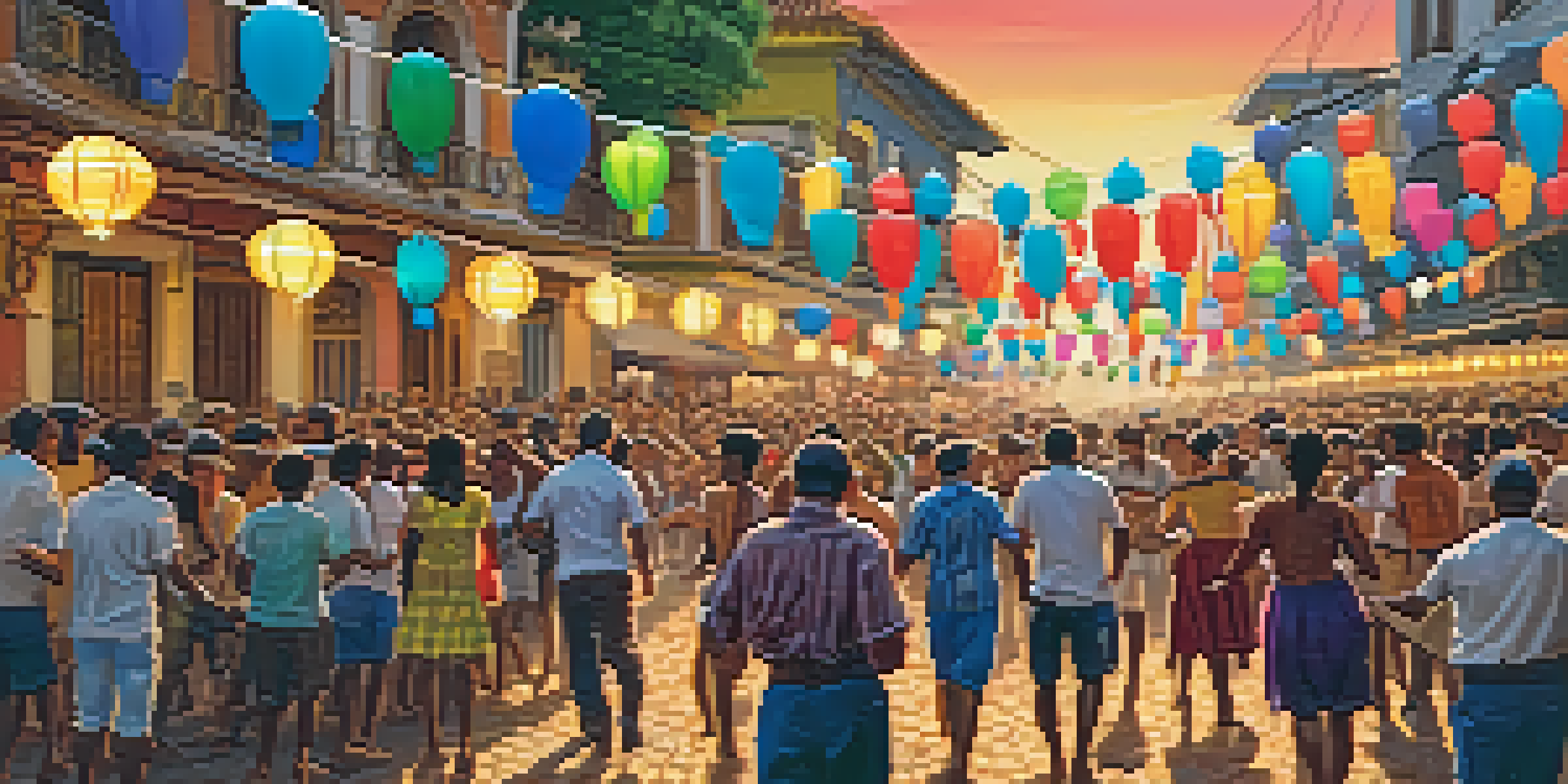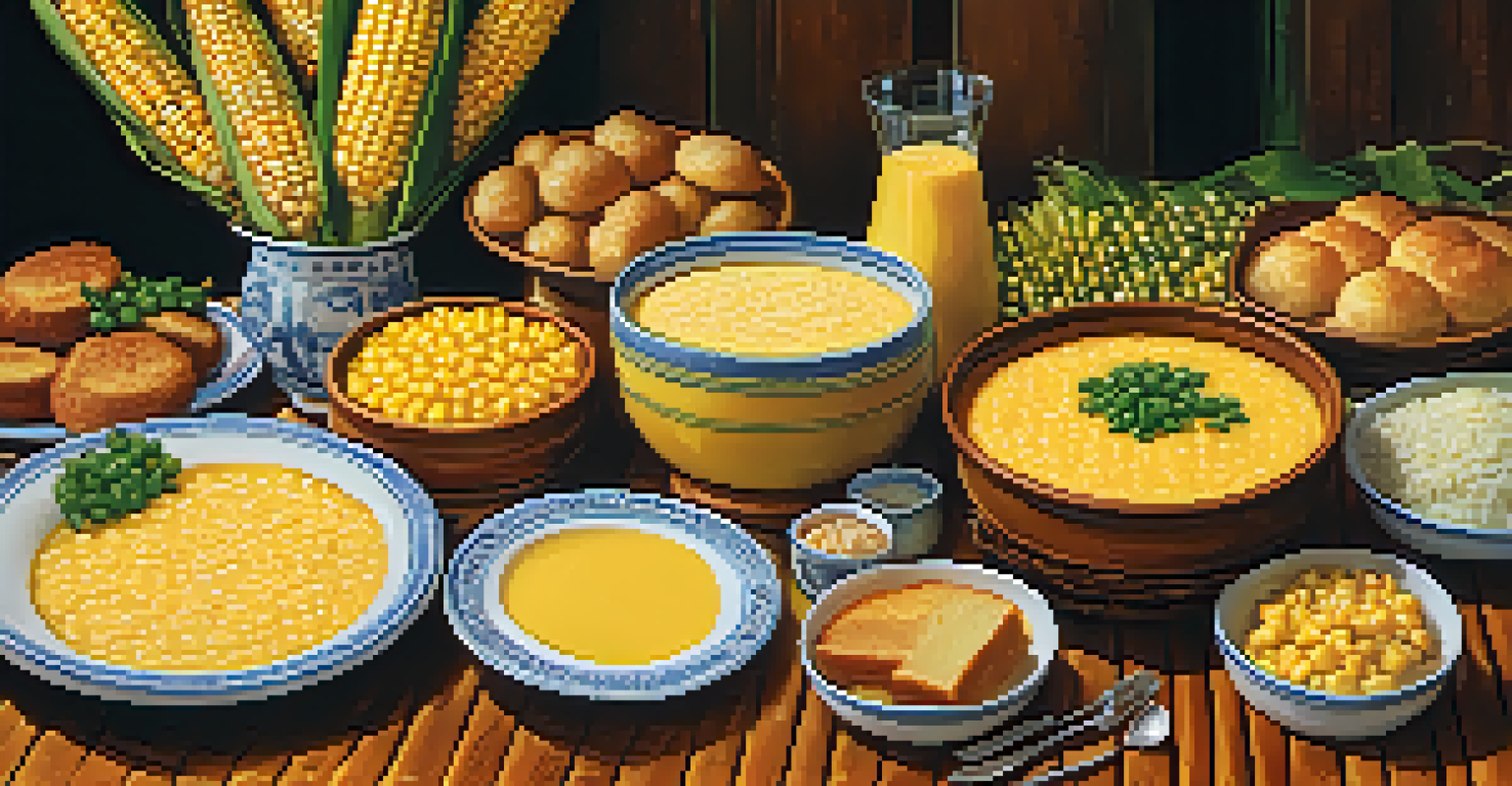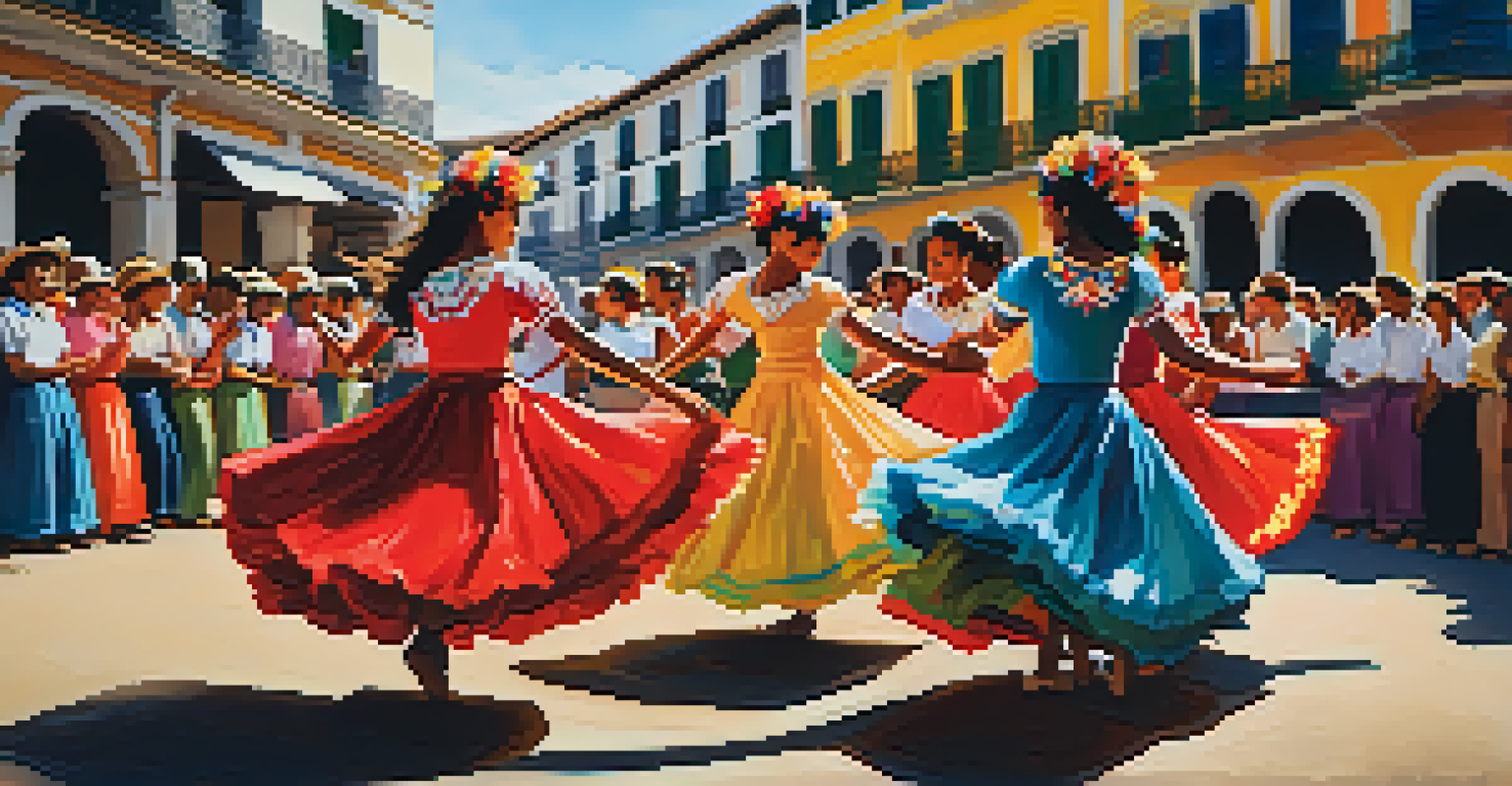São João Festival: A Rural Celebration of Brazil's Northeastern Culture

The Origins of the São João Festival in Brazil
The São João Festival has roots that stretch back to ancient European customs, particularly from Portugal. It celebrates the summer solstice and has evolved to embrace the unique culture of Brazil's Northeast. The festival is named after Saint John the Baptist, who is revered for his role in Brazilian religious traditions.
Festivals are the heart of a community, bringing people together to celebrate their shared stories and traditions.
Initially, the festival was a way for people to honor their agricultural practices and the arrival of the harvest season. This connection to farming is still a vital part of the festival today, with many activities centered around rural life. Over time, the celebration has transformed into a colorful display of music, dance, and food, reflecting the local culture.
Today, the São João Festival stands as a testament to Brazil's rich cultural tapestry, blending indigenous, African, and European influences. It brings communities together in a celebration of their shared heritage, making it a cherished annual event. Each year, the festival showcases the vibrancy of Northeastern culture, drawing locals and tourists alike.
Traditional Foods That Enrich the Celebration
One of the highlights of the São João Festival is undoubtedly the array of traditional foods that fill the tables. Dishes like pamonha (corn pudding) and canjica (sweet corn porridge) are staples that evoke the essence of rural life. These foods often feature corn, a key ingredient that symbolizes prosperity and abundance.

Street vendors set up stalls, offering delicious treats such as roasted corn and sweet coconut desserts. The inviting aromas wafting through the air create an irresistible atmosphere, drawing festival-goers in. Sharing these meals is more than just a culinary experience; it's a way for people to connect and celebrate together.
Cultural Roots of São João Festival
The São João Festival celebrates the summer solstice while honoring agricultural traditions and blending diverse cultural influences from indigenous, African, and European heritages.
As families gather around tables laden with these homemade delights, stories and laughter abound. These culinary traditions not only highlight the flavors of the region but also serve as a means of preserving cultural identity. The shared experience of enjoying these dishes adds depth to the festival, making it a feast for both the palate and the spirit.
Colorful Costumes and Festive Decorations
The São João Festival is a visual feast, with vibrant costumes and decorations bringing the streets to life. People often dress in traditional garb, featuring plaid shirts and straw hats that evoke the spirit of rural farmers. These outfits not only honor the heritage of the festival but also add to the joyful ambiance of the celebration.
Food is our common ground, a universal experience that connects us to our roots.
Throughout towns and cities, colorful banners and paper lanterns adorn homes and public spaces. These decorations create a festive atmosphere that invites everyone to join in the merriment. The striking visuals of the festival contribute to its charm, making it a photographer's dream.
This emphasis on color and creativity reflects the exuberance of Northeastern culture. It’s not just about looking good; it’s about feeling connected to the community and its traditions. As revelers don their costumes and adorn their surroundings, they embody the spirit of São João, celebrating unity and joy.
Dances That Bring the Community Together
Dance is at the heart of the São João Festival, with traditional rhythms that get everyone moving. The forró, a lively dance originating from the Northeast, is a popular choice during the festivities. It's a dance that encourages participation, making it easy for people of all ages to join in.
As the music plays, couples twirl and spin, embodying the joy of the occasion. The infectious energy of the dancers inspires onlookers to join in, creating a sense of community spirit. This collective participation is what makes the festival truly special, as it fosters connections among friends, families, and strangers.
Community Connection Through Dance
Dance, particularly the lively forró, fosters a sense of community and shared identity, encouraging participation from people of all ages during the festival.
Moreover, dance serves as a way to preserve cultural heritage. Each step, twirl, and clap tells a story of the region's history and traditions. By engaging in these dances, participants keep the spirit of their ancestors alive while creating new memories together.
Music That Captures the Essence of the Festival
Music is another cornerstone of the São João Festival, with lively sounds filling the air. Traditional styles like forró and xote are played by bands and musicians, inviting everyone to dance. These musical forms are characterized by their upbeat tempos and catchy melodies, making them perfect for celebrating.
Live performances often take place on stages set up in public squares, drawing crowds eager to enjoy the festivities. The atmosphere becomes electric as people sing along and sway to the rhythm. This shared experience of music fosters a sense of unity, as everyone joins in the celebration together.
Additionally, music acts as a powerful medium for storytelling. Many songs recount tales of love, struggle, and joy, reflecting the experiences of the Northeastern people. Through these melodies, the festival honors its roots and passes down the rich cultural narrative to future generations.
Religious Significance of the São João Festival
While the São João Festival is a vibrant celebration of culture, it also holds deep religious significance. Many participants honor Saint John the Baptist through prayers and rituals, asking for blessings on their harvests. This spiritual aspect intertwines with the festivities, creating a unique blend of joy and reverence.
The festival often includes processions and masses, where people gather to pay tribute to their faith. These religious elements remind participants of the festival's origins and the importance of gratitude for the blessings received. It's a time for reflection amid the joy and celebration.
Celebration and Spirituality Unite
The festival intertwines joy and reverence through religious rituals honoring Saint John the Baptist, reinforcing cultural identity and gratitude within the community.
This combination of celebration and spirituality exemplifies the Northeastern people's connection to their traditions. By acknowledging their faith during the festivities, they reinforce their cultural identity. The São João Festival is a reminder that joy and reverence can coexist beautifully.
São João Festival: A Symbol of Cultural Resilience
The São João Festival is more than just a celebration; it's a symbol of cultural resilience. Throughout Brazil's history, the Northeast has faced various challenges, yet the spirit of São João endures. This festival serves as a reminder of the strength and unity within these communities.
By coming together to celebrate their heritage, participants reinforce their identity and shared values. The festival fosters a sense of belonging, reminding everyone that they are part of something larger than themselves. This collective spirit is a source of pride for those who call the Northeast home.

In a world that often feels disconnected, the São João Festival offers a space for connection and celebration. It showcases the beauty of diversity while emphasizing the importance of community. As people gather to dance, eat, and celebrate, they create memories that will last a lifetime, ensuring the festival's legacy continues for generations to come.